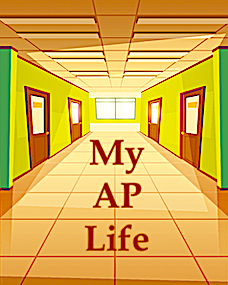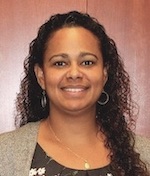Leaders Make or Break Instructional Coaching
When administrators use their instructional coaches in the proper and effective way, writes AP DeAnna Miller, they can watch the culture in their buildings shift to one of positivity and engagement.
I was an Instructional Coach for five years prior to going into my first administrative role. I learned a lot about instruction, standards, assessments, and diving deep into data to help students grow during those five years.
I also learned a lot about differentiation and how one teaching strategy may work in some classes, but it won’t necessarily work in every class. And I learned the first and most important lesson about coaching other teachers – the need to build trust and partnership through active listening and support.
Instructional coaching can be a very difficult job. Coaches have to maintain a delicate balance between guiding teachers and telling teachers what they should or should not be doing. Since coaches should not be used to evaluate teachers, they have to learn to act as liaisons between teachers and the administration – using observations and feedback as tools for professional growth and not as data for administrative decisions.
If I had to sum up the job in a single sentence, I would say that effective coaches work to make the vision and mission of the school come to life in the realities of the classroom.
What effective coaches know and do
Effective coaches, of course, need to be well-versed in high impact teaching and learning practices. And when their job description extends beyond their own content specialty, they also have to be knowledgeable about standards and curriculum across all the content areas.
They have to help teachers see the benefits of cross-curricular collaboration, while also teaching teachers how to use all assessment data (formative, summative, qualitative, and quantitative) more effectively to spur student academic growth.
Leading researcher and instructional coaching expert Jim Knight says, “Coaching is essential for the kind of growth we need to see in schools.” While this is true, it follows that what we really need is effective coaching and in order to get effective coaching in our schools, coaches need regular professional development on how to do what is being asked of them. They need to receive support and guidance from those who have gone before them.
This is often the weak link in the coaching model. New coaches seldom receive extensive training before they begin what is (with rare exceptions) a completely new kind of job for them. Most are pulled out of the classroom with little to no preparation or clarity about what their work will actually entail. They learn the job as they work the job, and many will say they found themselves left to make up the job as they went along.
This lack of in-depth preparation can cause misunderstandings between coaches and teachers and between coaches and administration, which can result in broken trust and shattered relationships. And coaching, just like teaching, is all about relationships.
Effective leadership is key to effective coaching
Of course, we cannot forget that administrators also need regular professional development so that they learn how to use the resource that coaches represent more effectively. They need to learn how to support their coaches and what their coaches should and shouldn’t be doing on a daily basis.
Without this in-depth leadership training, many administrators decide to use instructional coaches in an evaluative way, enlisting them to help in conducting formal observations and evaluations – or expecting their coaches to provide “feedback” to administration about their work with teachers that will be used to judge or evaluate.
This breeds distrust and breaks down what Jim Knight calls “the coaching cycle.” While coaches should be conducting observations and providing feedback on those observations to teachers, it should never be in an evaluative manner.

In order for coaches and teachers to work hand in hand to create better learning opportunities, teachers need to feel safe with the coach. They have to know that the coach is there to support them and guide them without any negative blowback.
My administrative role is to support our coaches
Now that I am on the other side of the coaching/admin fence, so to speak, I look to my own coaches to supply the lessons about effective teaching to our faculty and staff. I look for them to dive deep into the data and then help guide teachers towards instruction that engages, empowers, and enriches students while at the same time helping them grow academically using that data.
I look to my coaches to be the guides who lead our school toward better learning opportunities for both our staff and our students. I look to my coaches to be the liaisons who will help spur understanding and implementation of our school’s vision and mission.
Additionally, because of my experience as a coach, I’m especially alert for opportunities to coach my coaches. While our coaches do receive outside professional development, I try to look for those teachable moments when I can help guide them to building better relationships with teachers in our building.
When I attend grade level meetings that our coaches conduct, I make sure to have a reflective conversation with them afterward. It helps me understand the why behind some of their agenda items, and it allows them to reflect on any changes they would like to make before the next meeting.
Coaching can make – or break – a school
Effective instructional coaching can help a school grow students and teachers by building efficacy and capacity. Harvard professor and coaching advocate Atul Gawande has said, “Coaching done well may be the most effective intervention designed for human performance.” Yet coaching that isn’t done well can break down the culture of the school, causing mistrust and poor morale among the teachers, coaches, and administration – even our students.
This is why good professional development is needed for coaches and administrators. Books like Jim Knight’s The Definitive Guide to Instructional Coaching or Unmistakable Impact are great places to start.
I also recommend some intensive training during the summer, especially for new coaches and administrators new to having coaches in their buildings. This kind of lower-stress PD helps prepare them for this new role and the expectations that both will be assuming in the fall.
Instructional coaching is not easy. It is work that can make a person feel isolated and alone, especially for those of us that loved being in the classroom teaching kids. Yet, when instructional coaching is done effectively, it allows the coach to touch so many more young lives than we typically impact as teachers each year. Coaches become an important part of the growth cycle for not only teachers but also students.
And when administrators use their coaches in the proper and effective way, they can watch the culture in their buildings shift to one of positivity and engagement. I’ve seen it happen and it’s exciting!





































